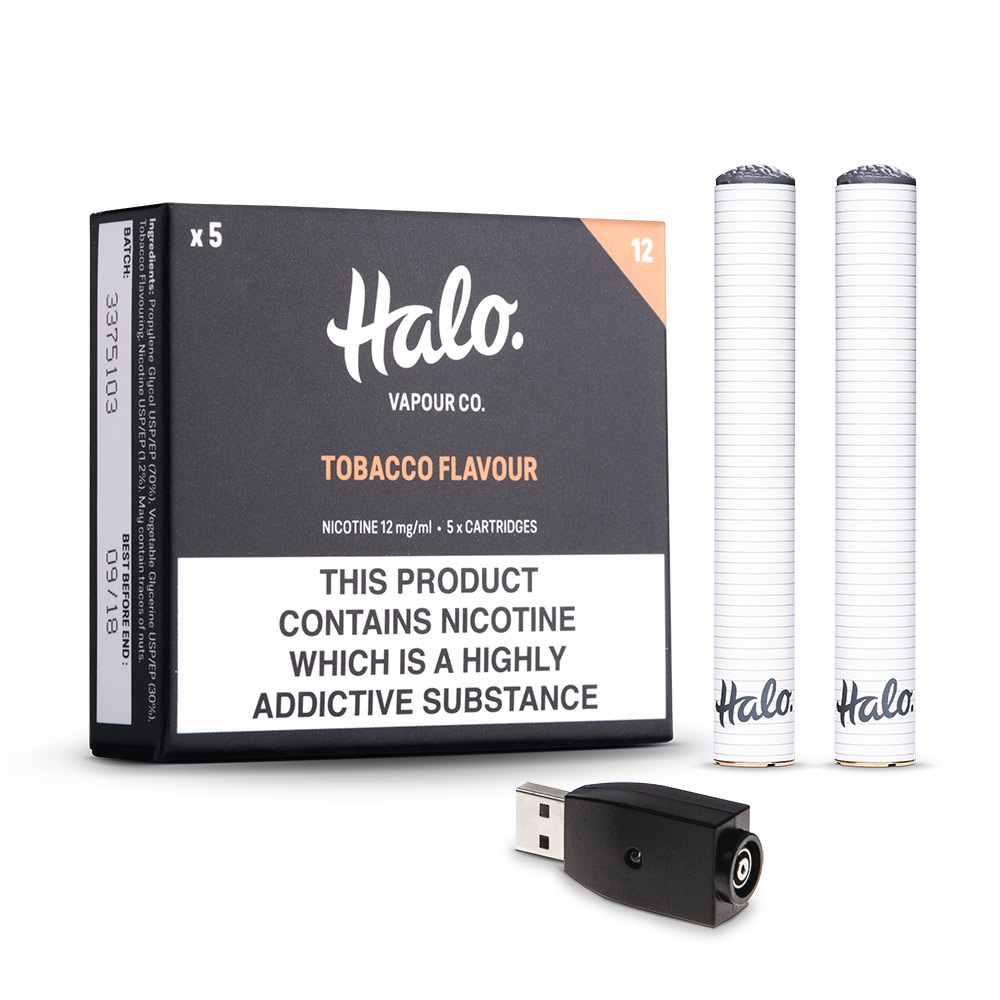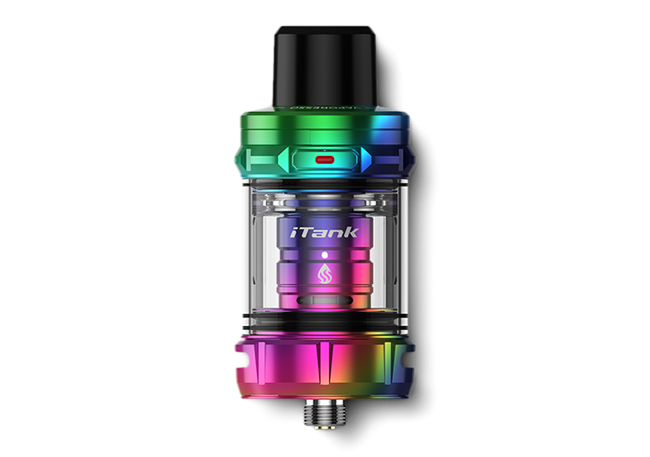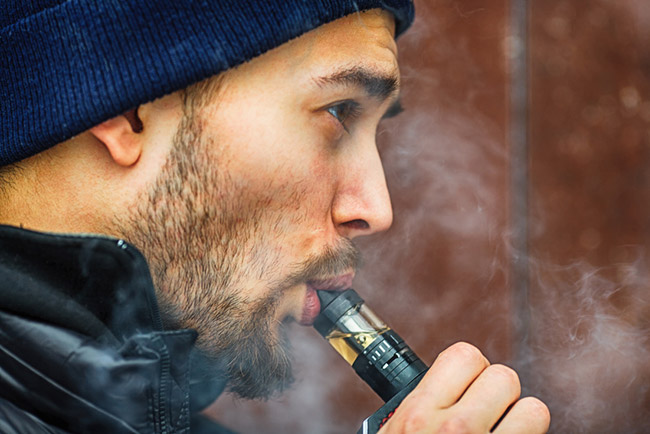
Mouth-to-Lung (MTL) Vs Direct-Lung (DL) Inhale Explained
I just wanted to buy a vape kit, but when I landed on a site I was immediately confused. Mouth-to-Lung, Sub-Ohm, Direct-Lung…what on earth do they all mean?
Browse through a vaping website and you’ll often come across the terms Mouth-to-Lung (MTL) and Direct-Lung (DL or DTL).
These terms are often used to describe vape hardware such as tanks and kits. They are very useful to experienced vapers, as they help them to decide if a tank or a kit meets their needs.
However, terms like these can be confusing to someone new to vaping.
So we put this guide together to:
- explain what these terms mean
- help you choose the inhaling technique that is likely to be right for you
- help you choose the equipment you need to suit your style of vaping.
If you’re confused by other terms, do check out our vaping glossary.
Contents
- What is Mouth-to-Lung inhale?
- What is Direct-Lung inhale?
- What is restricted Direct-Lung inhale?
- Which is right for you?
- How do you MTL vape?
- How do you DL vape?
- What vape juice do you need for MTL vaping?
- What vape juice do you need for DL vaping?
- Nicotine strengths for Mouth-to-Lung vaping
- Nicotine strengths for Direct-Lung vaping
- Coils
- Vaping hardware for MTL vaping
- Vaping hardware for DL vaping
What is Mouth-to-Lung inhale?
Mouth-to-Lung refers to a type of inhaling. When you MTL inhale, you take the vapour into your mouth. You then hold it in your mouth before inhaling it into your lungs.
With its tighter, more restricted draw, the MTL experience is much closer to that of a cigarette.
What’s more, the combination of less air drawn over the coil, the higher PG levels used and the inhaling technique mean you’ll experience more of a throat hit.
What is Direct-Lung inhale?
Direct-Lung inhale is when you inhale the vapour directly into your lungs, without holding it in your mouth first. It’s almost like taking a deep breath of air, only while pursing your lips.
Direct-Lung vaping requires greater airflow to cool the vape down. As a result, DL devices are designed to draw more air over the coil.
Direct-Lung inhale can also be known as Straight-to-Lung inhale.
A mixture of both?
Although most sites use the terms Mouth-to-Lung or Direct-Lung, in reality there can be a blur between the two. However you vape, the vapour has to pass through your mouth on its way to your lungs.
Still, the terms are widely used, and it’s worth learning what they mean before choosing the right device for you.
What is restricted Direct-Lung inhale?
Since we first wrote this post, a new term has entered vaping lingo.
Restricted Direct-Lung (abbreviated as RDL).
This acknowledges the blur between MTL and DL and refers to a vape which is still airy, but not as airy as a full-on DL inhale.
With restricted Direct-Lung vaping, you inhale in the same way, but you don’t require as much airflow over the coil. The flavour experience is similar to DL, but the throat hit is more similar to MTL.
Which is right for you?
For new vapers
Most people prefer Mouth-to-Lung inhaling when they start vaping. This is ideal for vape devices with a tighter draw, higher nicotine levels, and which deliver a better throat hit.
Some people also find it more closely resembles the way they smoked. Direct-Lung can be quite intense, and new vapers may find it makes them cough.
For flavour
It’s not just new vapers who prefer Mouth-to-Lung vaping. Some vapers believe that they get more flavour from their vape when they use a Mouth-to-Lung vaping technique.
There are several possible reasons for this.
- You add less air to your vape when you MTL vape.
- VG doesn’t mix as well as PG with flavours.
- When you MTL vape, the vapour spends more time in your mouth where you have more taste buds.
On the other hand, you take in more vapour with DL, which means the flavour is more concentrated.
What’s more, e-liquid mixologists are well aware that flavours taste different with high VG e-liquids. In the early days of vaping, they might have used the same recipe for all VG:PG ratios. Now recipes are more adapted so they work well with higher VG ratios.
If flavour is important to you, check out these 10 tips for maximising flavour from your vape.
For clouds/intense vape experience
Direct-Lung inhaling is more suitable for people who like blowing big clouds of vapour and for those who like a more intense vaping experience.
If an intense vape and lots of vapour is important to you, check out this article on how to cloud vape like a pro.
How do you Mouth-to-Lung vape?
If you have a device which is capable of both MTL and DL vaping, ensure the airflow is at least partially restricted. Take a smooth, steady drag straight into the mouth. This is a much longer drag than you would use with a cigarette. Hold the vapour in your mouth, then inhale into the lungs before exhaling.
How do you Direct-Lung vape?
Ensure the airflow controls on your device are open wide. This allows for a more airy vape. Then take a long, smooth steady vape straight into the lungs, just as if you were breathing.
What vape juice is best for Mouth-to-Lung vaping?
When Mouth-to-Lung vaping, most vapers use an e-liquid with a high PG (propylene glycol) ratio. This gives a satisfactory throat hit and is also more suited for the devices used for MTL vaping. Halo Originals and Max e-liquids, with their 50-50 VG:PG ratio, are ideal.
Alternatively, you can use nic salts. These deliver a smoother throat hit, and many vapers find they get a stronger, faster nicotine hit. As these usually come in higher nicotine strengths, they are not suitable for the more powerful devices used for Direct-Lung vaping.
(Learn more in our article about the differences between propylene glycol and vegetable glycerine.)
What vape juice is best for Direct-Lung vaping?
When you Direct-Lung vape, you usually use an e-liquid with a higher VG (vegetable glycerin) ratio. This gives a smoother vape with more vapour, and does not hurt the throat despite the larger clouds. Typical VG:PG ratios vary, but 70:30 VG:PG and 80:20 VG:PG ratios are common. Higher VG ratios are rare.
Double Drip is an example of high VG e-liquid, coming with a VG:PG ratio of 80:20, while Halo Shortfills come with a slightly lower VG:PG ratio of 70:30.
Nicotine strengths for Mouth-to-Lung vaping
The nicotine you use for mouth-to-lung vaping will depend on your needs.
For example, if you’ve recently quit smoking and have been a heavy smoker, you’ll need stronger nicotine levels. However, in general, you’ll need stronger nicotine levels with Mouth-to-Lung vaping than with Direct-Lung vaping.
Nicotine strengths for Direct-Lung vaping
When you Direct-Lung vape, usually with a more powerful device, you can get a lot more vapour. That means you get a lot more nicotine. What’s more, nicotine can contribute to the hit you get on your throat.
As a result, you’ll usually need to use lower-strength nicotine for Direct-Lung vaping. Many DL vapers use very low nicotine levels such as 0.6%. 0.3% or even 0%.
Here’s a tip which can help you when you move from MTL to DL.
Imagine how much more vapour you inhale. Then reduce the nicotine levels to counter it.
Using 1.2% and now taking in four times as much? Maybe use a 0.3% instead.
Coils
Inside your tank are coils. These heat up the e-liquid, turning it into vapour. Coils come with different resistances, which are measured in ohms (often shown using this symbol: Ω).
To explain simply:
- Higher resistance coils: Requires less power, produces less vapour.
- Lower resistance coils: Require more power and battery capacity, produces more vapour.
Which coils are right for MTL vaping?
Because Mouth-to-Lung vaping needs less vapour, you usually use a coil with a higher resistance. Typically, this used to be higher than 1Ω.
However coils are evolving, and nowadays you will sometimes see a lower resistance coil (below 1Ω) which has been manufactured for MTL vaping. These are often labelled MTL coils to avoid confusion.
Which coils are right for DL vaping?
You usually want more vapour for Direct-Lung vaping. As a result, you’ll want a coil with lower resistance. Most people use coils with a resistance of less than one Ω, and coils can go as low as 0.1 Ω. A coil with 0.5 Ω is a good resistance to start with.
It’s not just the resistance that makes a difference - the design also helps. Many DL coils come with a mesh, or 3d mesh, design. One of the advantages of mesh coils is that it increases the contact area between the coil and the e-liquid, which increases the amount of vapour.
Vaping hardware for Mouth-to-Lung vaping
MTL vape batteries and mods need less power than DL hardware, while the tank is often designed to take coils with a higher resistance.
What tanks are suitable for Mouth-to-Lung vaping?
The Innokin Zlide tank is the product of a collaboration between well-known vape reviewers Phil Busardo and Dimitris Agrifiatos with vape manufacturer Innokin. The aim was to create a tank which works for Mouth-to-Lung vaping and is easy to use.
Since the original tank was introduced, the range of coils (called Z coils) that work with the device has increased, giving you the option of experimenting with your vaping style in the future.
What batteries are suitable for Mouth-to-Lung vaping?
The Innokin Endura comes with just three power levels. This makes it great for vapers who are looking for a simple-to-use device.
What vape kits do I need for Mouth-to-Lung vaping?
For beginners, prefilled pod devices make a great introduction to vaping due to their easy-to-use design. Ranges such as SKE Crystal Bar, Lost Mary and IVG provide an airy MTL inhale with strong, extra-concentrated flavours.

The Vaporesso Luxe Series offers great options for devices that support both MTL and DL vaping. These devices offer you a choice of pods with different coil resistances, This allows you to easily switch between inhale styles without having to change devices.
If you’re looking for something which is very easy to use and looks and feels like a cigarette, the Halo Cigalike Bundle may be more appropriate for you. Alternatively, if you need a stronger nicotine hit check out the Hexa Pro, which comes with pre-filled pods and a combination of nicotine salts and regular e-liquid.
There are also pod mods to consider. Some pods mods are designed only for DL or RDL vaping. However, an increasing number can also be used for MTL vaping. At the time of writing, the Smok Nord 2 is the best option for vapers who mostly MTL inhale.
See our Best MTL Vape Kits post for more suggestions.

Vaping hardware for Direct-Lung vaping
For Direct-Lung vaping, you need:
- a device with more power.
- a tank with lots of airflow to give an airier vape
- a coil with a low resistance and a larger surface area.
Remember: lower resistance coils + higher power + more airflow = more vapour.
I also find a wide drip tip helps with Direct-Lung vaping.
Let’s take a look at some examples.
What mods do you need for Direct-Lung vaping?
Do note that while in the past vapers often bought mod devices and matched them to their favourite DL tank, most people now buy kits which contain both a mod and a tank.
That means the choice of pure mods is more limited now, especially when it comes to devices capable of delivering lots of power.
One of the few options now available is the Smok X Priv Plus mod. This provides up to 225 watts of power more than you are ever likely to need, but lots of fun to play with if you like pushing things to the limit.
Direct-lung tanks
For a long time, our favourite choice for DL tank which can produce serious vapour was the HorizonTech Falcon II tank.
However, it is getting a bit long in the tooth now, and a great modern alternative is the Vaporesso iTank T.

What kits are suitable for Direct-Lung vaping?
There's still plenty of choice when it comes to vape mod kits for Direct-Lung vaping. The Lost Vape Centaurus N200 offers you the complete range of MTL to DL vaping with a wattage ranging from 5 to 200. On the other hand, if you're looking for a top of the range device, check out the Innokin Sidera Zenith M. This devices comes with an intelligent DNA60C chipset enabling advanced temperature control - and a luxurious leather finish to boot.
It’s also well worth checking out pod mod kits. More powerful than pods, but less difficult to use than mods, these devices can be a great option for Direct-Lung vapers. Our current favourite is the Smok IPX 80 but you can find more options in our Best Pod Mods round-up.
Another interesting potential device is the Innokin Go-Max -the first fixed coil Direct-Lung device, and great for vapers who want to enjoy larger clouds of vapour but who struggle to change coils.



